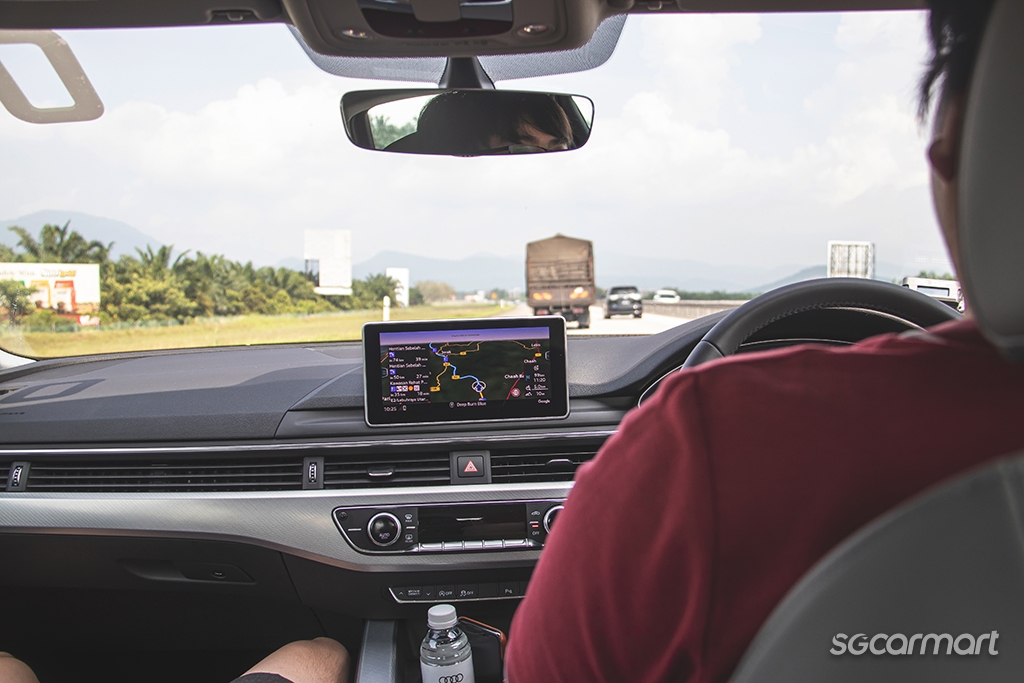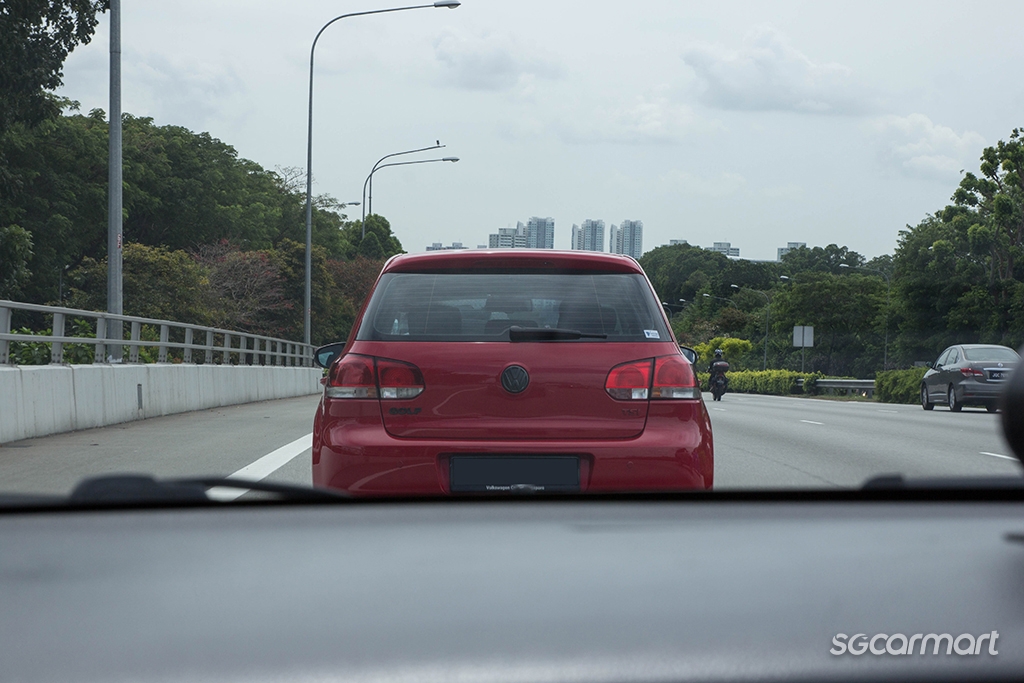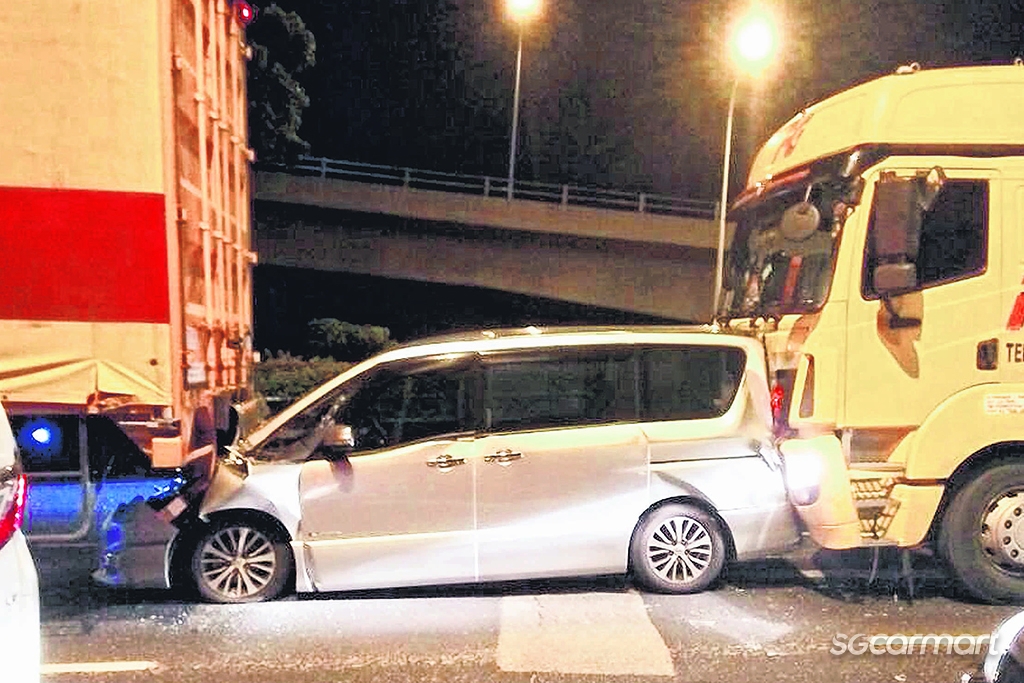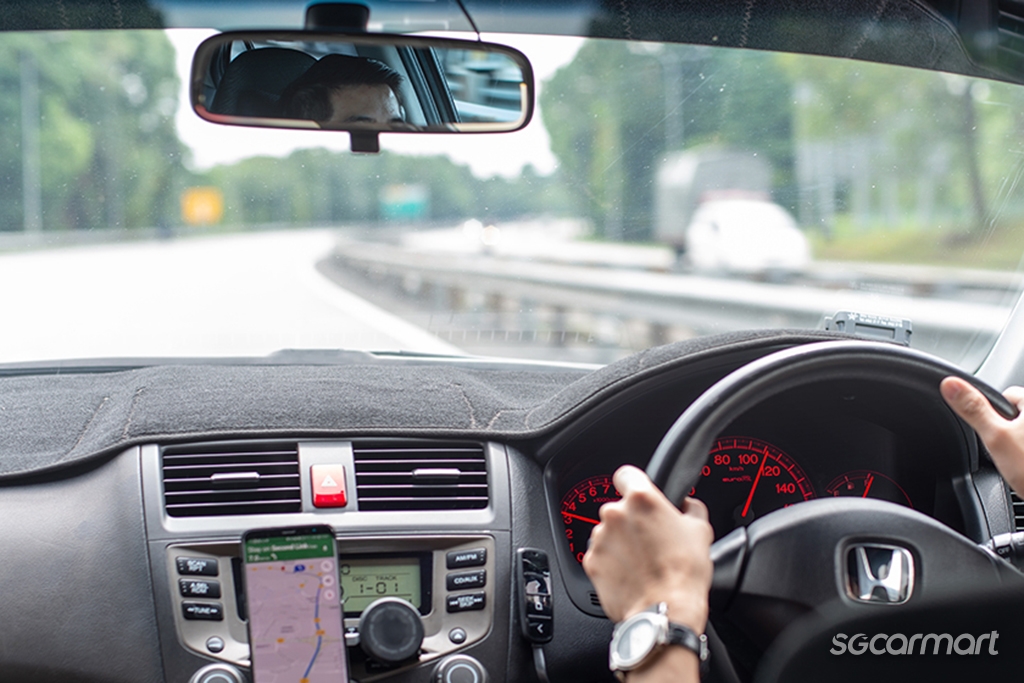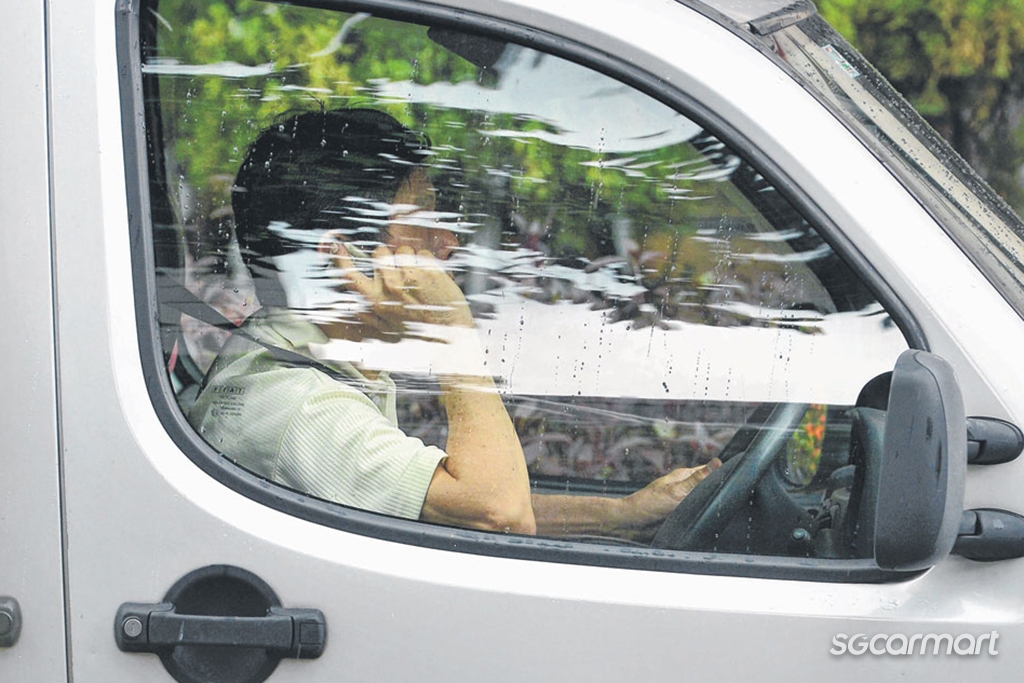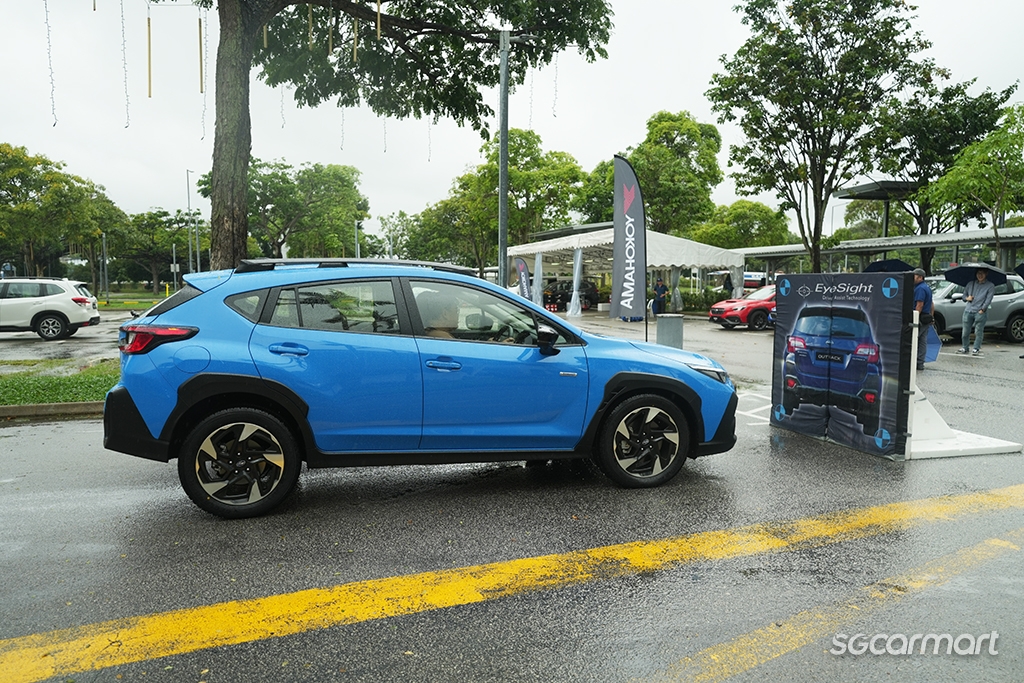How to avoid getting into a chain collision on expressways
02 Mar 2024|13,133 views
Getting into a chain collision, or what they call a 'pileup' on the expressway, has got to be one of my biggest fears when driving. You don't necessarily have to be speeding, but if the traffic in front of you were to come to a sudden standstill (often due to a ripple effect from far in front of you), you could easily end up crashing into the car in front of you. And if the car behind can't stop in time as well, your car will be sandwiched and badly damaged on both ends.
If you share the same fear as me, here are a few tips on how you could avoid becoming the victim of a chain collision on the expressway. Trust me, I have it thoroughly thought-out.
Look far ahead when driving
People always tell you to look where you are going, and unless you want to crash into the vehicle in front of you, you probably shouldn't fixate on it.
To be a safe driver, you have to look far ahead, well past the vehicle in front of you. This way, you will have a better sense of what to expect - if the vehicle three cars in front of you has suddenly slowed down, you’ll know that you'll have to slow down in anticipation of the impending ripple effect that could result in the car right in front of you to slow to a sudden stop.
Look far ahead and you'll be able to buy yourself time to react and keep yourself safe.
Keep a safe following distance
We've all heard the phrase "Keeping a safe following distance" when it comes to driving. The problem is, what exactly is the safe following distance? If you have a discrete answer, then you don't know what it is - the safe following distance differs according to vehicle speed.
As the stopping distance of a car is affected by road conditions and the speed of the vehicle, the distance that you should keep from the front vehicle will also vary accordingly. According to the Traffic Police Basic Theory handbook, you should keep a car length distance for every 16km/h - at 64km/h, four car lengths should be observed, while at 80km/h, you should be following five car lengths away.
Another method is to use the 'two-second rule' - as the vehicle in front passes by a stationary object, it should take you two seconds to reach the same object. The two-second rule will work at any speed. Keeping a safe following distance will allow you to react to unexpected movements such as emergency braking in time, allowing you to avoid an accident.
Be especially careful when driving on the first lane
The first lane (right most lane) on the expressway is the fastest moving lane, meant for overtaking. While everyone wants to get to their destination as quickly as possible, you shouldn't just stay in the first lane all the way - with faster cars approaching, you could end up hogging the lane.
But more importantly, due to its nature as the overtaking lane, unpredictable disruption to the traffic on the first lane is a frequent occurrence.
You should have noticed how during moderate to peak traffic conditions, the first lane can often go from high speeds to a complete standstill for no apparent reason. The fact that most chain collisions and pileups occur on the first lane is yet another reason for you to be especially careful.
Be aware of the following car's distance
This is something that my dad taught me when I passed my driving test. While most of our concentration should be on the road up ahead, my dad taught me to also keep an eye on the rearview mirror from time to time.
By keeping an eye out for the cars around and behind you, you can anticipate and react defensively when needed.
If you notice that the vehicle behind you is following you too closely, you should try to maintain a further distance from the vehicle in front of you - this way, if the front vehicle were to slow down or stop suddenly, you will still have some buffer space to inch forward or to brake shallower to leave some space for the rear vehicle to stop safely.
Don't drive distracted
Things happen quickly when you are driving at speed - a sudden collision in front of you, or someone slamming on the brakes without any prior indication, and you'll probably struggle to slow down or avoid the obstacle.
Now, if you add in a distraction such as your smartphone while you are driving, chances are you won't even be able to react and avoid getting into trouble. So, just keep your phone out of reach and out of sight till you reach your destination to be safe!
Make use of your car's safety systems
Many modern cars are equipped with driver-assist systems that can help save you from a collision.
Cars with forward collision warning systems will prompt you to step on the brakes when the system detects an impending collision with the object in front of your car. This will come in handy if you are momentarily distracted, or not paying as much attention while driving.
For cars with brake assist, the car will automatically initiate emergency braking if you do not react in time (that said, several predefined conditions have to be met for it to activate, including a defined speed range). While these systems can be annoying at times, especially if the system is too sensitive, you should still leave the feature on as you'll never know when it will help you prevent an accident.
However, these driver assist systems are not foolproof - you shouldn't overly rely on such features to save you from an accident. Driving cautiously and attentively is still the best way to stay safe.
Here are some other articles that you might be interested in
Pro tips for driving in the rain
Two things you must practise to keep your child passenger safe
Getting into a chain collision, or what they call a 'pileup' on the expressway, has got to be one of my biggest fears when driving. You don't necessarily have to be speeding, but if the traffic in front of you were to come to a sudden standstill (often due to a ripple effect from far in front of you), you could easily end up crashing into the car in front of you. And if the car behind can't stop in time as well, your car will be sandwiched and badly damaged on both ends.
If you share the same fear as me, here are a few tips on how you could avoid becoming the victim of a chain collision on the expressway. Trust me, I have it thoroughly thought-out.
Look far ahead when driving
People always tell you to look where you are going, and unless you want to crash into the vehicle in front of you, you probably shouldn't fixate on it.
To be a safe driver, you have to look far ahead, well past the vehicle in front of you. This way, you will have a better sense of what to expect - if the vehicle three cars in front of you has suddenly slowed down, you’ll know that you'll have to slow down in anticipation of the impending ripple effect that could result in the car right in front of you to slow to a sudden stop.
Look far ahead and you'll be able to buy yourself time to react and keep yourself safe.
Keep a safe following distance
We've all heard the phrase "Keeping a safe following distance" when it comes to driving. The problem is, what exactly is the safe following distance? If you have a discrete answer, then you don't know what it is - the safe following distance differs according to vehicle speed.
As the stopping distance of a car is affected by road conditions and the speed of the vehicle, the distance that you should keep from the front vehicle will also vary accordingly. According to the Traffic Police Basic Theory handbook, you should keep a car length distance for every 16km/h - at 64km/h, four car lengths should be observed, while at 80km/h, you should be following five car lengths away.
Another method is to use the 'two-second rule' - as the vehicle in front passes by a stationary object, it should take you two seconds to reach the same object. The two-second rule will work at any speed. Keeping a safe following distance will allow you to react to unexpected movements such as emergency braking in time, allowing you to avoid an accident.
Be especially careful when driving on the first lane
The first lane (right most lane) on the expressway is the fastest moving lane, meant for overtaking. While everyone wants to get to their destination as quickly as possible, you shouldn't just stay in the first lane all the way - with faster cars approaching, you could end up hogging the lane.
But more importantly, due to its nature as the overtaking lane, unpredictable disruption to the traffic on the first lane is a frequent occurrence.
You should have noticed how during moderate to peak traffic conditions, the first lane can often go from high speeds to a complete standstill for no apparent reason. The fact that most chain collisions and pileups occur on the first lane is yet another reason for you to be especially careful.
Be aware of the following car's distance
This is something that my dad taught me when I passed my driving test. While most of our concentration should be on the road up ahead, my dad taught me to also keep an eye on the rearview mirror from time to time.
By keeping an eye out for the cars around and behind you, you can anticipate and react defensively when needed.
If you notice that the vehicle behind you is following you too closely, you should try to maintain a further distance from the vehicle in front of you - this way, if the front vehicle were to slow down or stop suddenly, you will still have some buffer space to inch forward or to brake shallower to leave some space for the rear vehicle to stop safely.
Don't drive distracted
Things happen quickly when you are driving at speed - a sudden collision in front of you, or someone slamming on the brakes without any prior indication, and you'll probably struggle to slow down or avoid the obstacle.
Now, if you add in a distraction such as your smartphone while you are driving, chances are you won't even be able to react and avoid getting into trouble. So, just keep your phone out of reach and out of sight till you reach your destination to be safe!
Make use of your car's safety systems
Many modern cars are equipped with driver-assist systems that can help save you from a collision.
Cars with forward collision warning systems will prompt you to step on the brakes when the system detects an impending collision with the object in front of your car. This will come in handy if you are momentarily distracted, or not paying as much attention while driving.
For cars with brake assist, the car will automatically initiate emergency braking if you do not react in time (that said, several predefined conditions have to be met for it to activate, including a defined speed range). While these systems can be annoying at times, especially if the system is too sensitive, you should still leave the feature on as you'll never know when it will help you prevent an accident.
However, these driver assist systems are not foolproof - you shouldn't overly rely on such features to save you from an accident. Driving cautiously and attentively is still the best way to stay safe.
Here are some other articles that you might be interested in
Pro tips for driving in the rain
Two things you must practise to keep your child passenger safe







